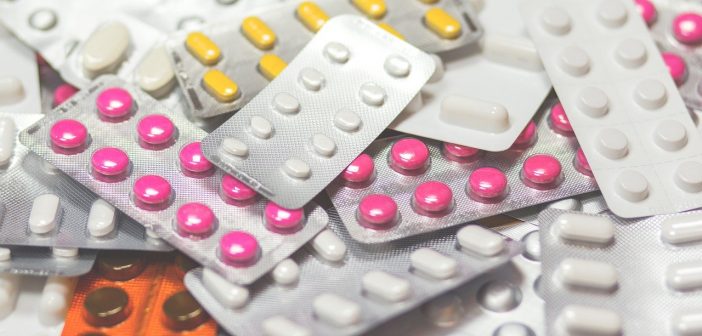Dr. Harneet Arora, freelance clinical scientist and FDA regulations expert, shares her advice on how to get FDA approval for a new drug and how to avoid common mistakes.
The commercialisation of a new drug in the United States follows a rigid path. Each step along the process, from research and development to labelling and final release on the market, is strictly monitored by the Food and Drug Administration (FDA). However, applying for FDA approval for a new drug can be a real minefield.
According to a recent study from the Massachusetts Institute of Technology, only about 14% of all drugs in clinical trials gain approval from the FDA, the U.S. federal agency responsible for protecting and promoting public health. This means that for 86% of all proposed new drugs, something goes wrong along the process towards commercialisation, wasting time, energy and capital.
So, what are the most common avoidable mistakes when applying for FDA approval and what can applicants do to prevent them from occurring? Dr. Harneet Arora, freelance FDA submissions expert on Kolabtree, shares her top tips.
1. Organise your paperwork
The first mistake—and the easiest to avoid—is to present an incomplete application. Check the FDA website to make sure that you are submitting all the required forms and that they are thoroughly completed. Pay extra attention when filling in the 1572 form, one of the key documents of your investigational new drug (IND) submission.
The 1572 form ensures that applicants don’t have any bias or conflict of interest, that they agree to follow the FDA Code of Federal Regulations for clinical trials and that they have the necessary experience to conduct the study in an ethical and scientifically rigorous way. Avoiding errors in this form will prevent a hold-up later on.
2. Present measurable evidence
After all phases of a clinical trial have been completed, the FDA will review the results and organise an open discussion — often virtually— where pharmaceutical businesses present evidence that their proposed drug is effective and offers significant advantages over existing drugs for the same disease. Here the goal is not to establish if the new drug will be safe — this has already been determined with in vitro and in vivo studies — but to prove that it will significantly improve patients’ lives.
In my experience, most rejections happen at this stage because of a lack of clear data on the drug’s efficacy and on how it is better than already commercialised treatments. As such, it is important to present measurable parameters on the effectiveness of the drug.
For example, it is not enough to indicate that patients’ symptoms have improved by 2%, it is necessary to specify the nature of that improvement.
It is also important to provide a frame of reference to evaluate said improvement. This can be a comparison between a group of patients taking the new drug and a control group taking a placebo, or a group taking a drug that is already on the market.
3. Keep a thorough record
It is essential to properly document every stage of a new drug’s development and testing, from accurate pre-clinical data on in vitro and animal studies, to how the recommended initial and maximum dose was established. Applicants must also prove that the drug has been tested on an adequate number of subjects and must carefully document how they have reacted to the treatment. In particular, applicants should signal any adverse side effects that the subjects experienced. If some of the subjects decide to drop out of the trial, applicants must explain why that happened.
It is also necessary to prove that the benefits of the new drug outweigh its side effects and that these are less severe than those of already commercialised drugs for the same disease. For example, a drug to treat a terminal disease that causes vomiting and migraines could still get approved if it significantly increased patients’ life expectancy. If the same side effects were reported for a drug to treat hypertension, approval would most likely be denied, since there are already treatments on the market for that condition with lesser side effects.
In any case, applicants have to present their risk evaluation and mitigation strategies (REMS), where they have to explain in detail what measures they are planning to take to minimise eventual side effects. When compiling this section, make sure to be as specific as possible about what patients need to do to avoid side effects, for example describe if they need to use contraception when undergoing the treatment, and if so what kind.
Final considerations
For the new drug to be approved, at least 80% of subjects in the trial must show signs of improvement. To make sure that this evidence is presented correctly and that the sample group is big enough to provide significant data, applicants might need the assistance of an expert statistician. At this stage, companies who don’t have an in-house statistician should consider collaboration with a freelancer, who can assist them in selecting the sample group and collecting and analysing clinical data.
Finally, it’s important to keep in mind that at any time the FDA can audit the facility where the drug is being developed and tested, to make sure that it conforms to good clinical practice (GCP) guidelines. For example, during an audit the FDA might verify that all personnel have the necessary qualifications to safely fulfil their tasks.
Applying for FDA approval can be nerve-wracking but consulting with experts who have a detailed knowledge of FDA procedures can streamline the process. Some pharmaceutical companies might have an in-house regulations department just for that purpose, but smaller companies might lack the capacity and budget for such an investment. In that case, hiring a freelance expert can be the solution.
Kolabtree helps you hire FDA experts and freelance regulatory writers, on demand. Post your project and get quotes for free.
Related experts:
Bioinformatics freelancer | Plant genetics | Developmental Biology | Gene therapy | Stem cells |
DNA sequencing data analysis |Animal genetics | Drug interactions | Genetics and Genomics | Medical Device Consultants | Freelance Medical Writer | Freelance CER Writer | EU MDR Consultants | FDA Submissions | Literature Search Experts | Regulatory Compliance Experts | Clinical Trials Expert | Regulatory Writers | PMS Consultants | PMCF Consultants | Biostatistics Experts | Product Development Expert







